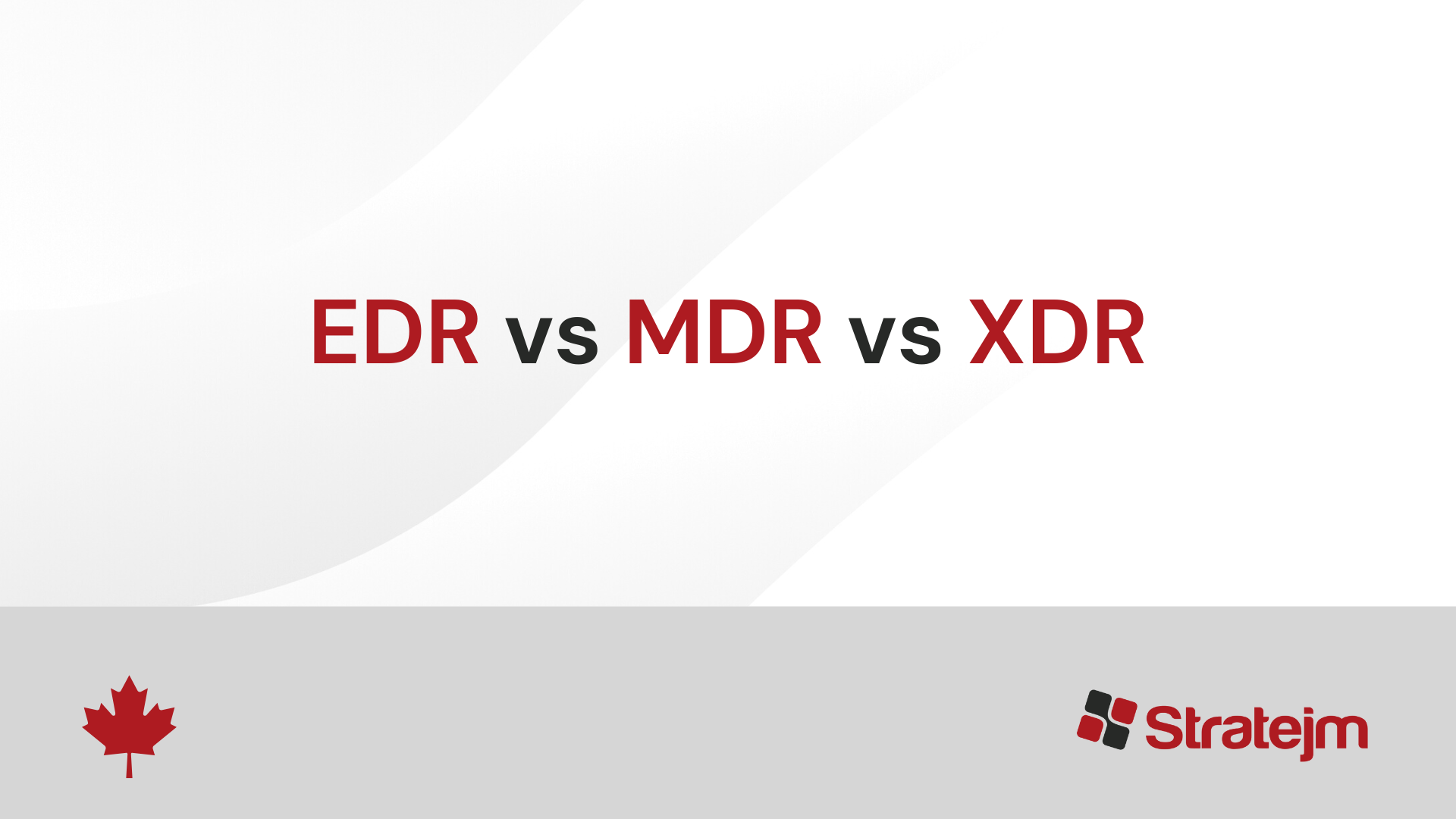
EDR vs MDR vs XDR
The cybersecurity industry is notorious for coining terms and acronyms that can quickly become difficult to fully comprehend. This ultimately makes navigating the vendor landscape a challenge for many IT departments, particularly when looking at endpoint detection and response solutions. So what is the difference between EDR, MDR and XDR?
Today we explore three important detection and response tools:
- Endpoint Detection and Response (EDR)
- Managed Detection and Response (MDR)
- Extended Detection and Response (XDR)
How Endpoint Security Has Evolved
Early endpoint security tools focused on protecting singular devices or closed-off networks. This constituted the “castle-and-moat” approach, effective when many people and businesses would only access network components from a single location.
However, as we are all well aware, technology continues to evolve at a rapid pace. People are now sending and receiving communications from everywhere, making the traditional identity perimeter all but obsolete.
Furthermore, legacy security tools rely heavily on knowledge of existing security threats to prevent access to other network components. In the age of zero days and advanced persistent threats, this approach is simply no longer effective.
With this in mind, cybersecurity capabilities have evolved to offer multi domain threat analysis and are designed to anticipate threats rather than simply reacting to them. Additionally, these newer systems provide increased visibility into your network traffic while providing the means to respond to advanced threats before they cause harm.
Read below for a deep dive into the different threat detection and response solutions available:
Endpoint Detection & Response (EDR)
Gartner first defined EDR as a group of emerging security solutions that detect and investigate suspicious activities on hosts and endpoints using a high degree of automation to enable security teams to identify and respond to endpoint threats more quickly.
Today, EDR solutions are security tools that allow organizations to capture all endpoint activity while leveraging advanced analytics to provide real-time visibility and incident response.
In simpler words, endpoint detection and response (EDR) solutions focus on securing endpoint devices with connections to and from a network. (Note: Endpoints include laptop and desktop computers, smartphones, tablets, Internet-of-Things (IoT) devices, servers, and more.)
Endpoint detection and response solutions should include the following capabilities:
- Record and store queries
- Endpoint monitoring and event recording
- Detect threats and suspicious activity
- Analyze behaviours and security events
- Remediate threats
- Allow security teams to detect and analyze suspicious activities more efficiently over time
By the end of 2023, Gartner predicts that more than 50% of all enterprises will have switched to EDR from legacy signature-based AV. (Source)
Managed Detection & Response (MDR)
In short, MDR should include all EDR capabilities, but also includes a managed, human component that augments the security outcomes achieved through it.
In fact, MDR does not typically refer to a specific technology, but rather is a managed service delivered through a trusted managed security service provider (MSSP).
When considering MDR providers, try focusing more on outcomes and goals achieved rather than specific technologies and their features.
MDR providers should include the following capabilities:
- Threat Hunting
- 24/7/365 Continuous Monitoring
- Type 2 Security Operations Center (SOC)
- Guided incident response and remediation
XDR – Extended Detection & Response
Unfortunately for cybersecurity professionals, looking through a single pane of glass at an organizations infrastructure often does not provide the necessary coverage and visibility needed to effectively cover a threat surface.
In fact, EDR and MDR solutions are often viewed as somewhat limited as they typically only address a single aspect within a network. In response, XDR is an extension of the traditional EDR platform by expanding the detection and response capabilities to cover ALL enterprise data sources.
In other words, XDR solutions streamline data analytics and workflows across the entire security stack by enhancing visibility around hidden and advanced security threats.
The main goal here is to bring the detection and response capabilities of EDR to provide a robust view across networks while providing a unified, single pane of glass view across multiple tools and across vectors.
Extended detection and response (XDR) solutions should include the following capabilities:
- Diverse telemetry coming from multiple domains
- Pulling together detection and response for endpoints
- Centralized user interface
- Data search, investigation and threat hunting across all covered sources
EDR vs MDR vs XDR Solutions
Why XDR Should be a Key Part of your Security Strategy
Earlier threat detection solutions tended to focus on one security layer at a time. For example, many EDR solutions focus solely on monitoring endpoints while network traffic analysis solutions are deployed to handle network data.
These gaps in coverage could perhaps be solved by simply building out multi-layered security tools. However, this often leads to a ton of operational complexity. Over time, working with such a complex security stack becomes more and more difficult.
What this also means is that data often ends up siloed, preventing the company from achieving complete and accuracy visibility into emerging threats.
XDR addresses these issues by providing a comprehensive, multi-layered security strategy that also consolidates the most pertinent information into a single-pane of glass.
This has the affect of streamlining security data ingestion, analysis and workflows across an organizations entire security stack.
How to Choose Cybersecurity Solutions
Cybersecurity experts know that no two organizations have the same needs when it comes to cybersecurity. For this reason, it is important to select the right threat detection tools so that you can get the coverage you need:
EDR vs MDR vs XDR:
Choose EDR If:
- You want to upgrade from NGAV and improve your security posture
- You already have an in-house security team that can act on alerts and recommendations from EDR
- You are looking to establish the foundations of a highly scalable security architecture
Choose MDR If:
- You do not have a mature detection and response program that can remediate advanced threats
- You want to introduce skills and build maturity without having to hire new staff
- You are struggling to hire qualified cybersecurity talent
- You want protection against the latest threats and attack vectors
Chooose XDR If:
- You want enhanced advanced threat detection
- Accurate multi-level domain analysis, investigation and threat hunting from a single pane of glass
- Your info sec team is drowning in false positives
- You need to improve your response timeYou want to improve security ROI across all tools
E-MDR – Enhanced Managed Detection and Response
Stratejm’s Enhanced Managed Detection Response is a complete package of cybersecurity tools designed to provide the most complete protection for your organization.
E-MDR provides all the capabilities of XDR but also extends our coverage past network devices while also providing the superior logging capabilities of SIEM.
With Stratejm’s E-MDR, you can achieve:
- Resource augmentation
- Greatly increased security maturity with 24×7 threat management
- Faster time to value
- Greatly reduced MTTR and MTTD

